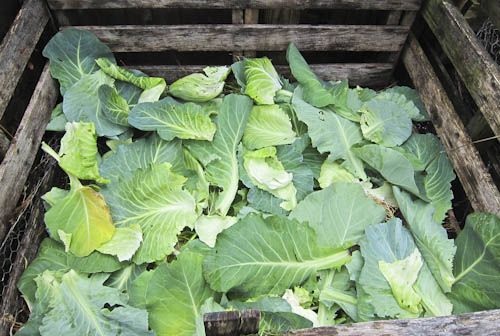
Cabbage wastes.
In a day Jeremiah Mwangi earns an extra Sh1, 050 from selling cabbage wastes that he gathers from Muthurawa Market in Nairobi. This he adds to his daily wages to give him more cash as compared to his peers who only rely on their wages.
Mwangi who earns a minimum of Sh1, 500 a day by offloading cabbages from lorries which bring the produce to the market gets more money by selling waste cabbage leaves and stalks which fall off and trashed during the process.
RELATED NEWS: Farmers earn from selling egg shells
“We are a group of three men contracted by brokers who ferry cabbages to the market. When the lorries arrive, we begin offloading the vegetables as we count them for traders,” said Mwangi. “We are then paid Sh1, 500 for offloading a lorry,” he added.
On a good day the three can offload more than five lorries of cabbages earning the trio a wage of Sh7, 500. Mwangi then in agreement with the drivers collects the cabbage leaves that fall off in the offloading process and pile them together.
He also works closely with the traders who sell the cabbages to consumers to get more cabbage wastes. “Some customers do not like the outer loose and mostly dirty leaves and stalks which I help in cutting off, I collect these too to add to the rest then sell at the end of each day,” he said.
RELATED NEWS: Town garbage feeds farmer's pigs
His customers include dairy farmers from Kiambu County and other livestock keepers in various estates in Nairobi. He has for three years now developed 10 contacts of regular customers to inform them once the cabbage wastes are ready. He sells them at Sh150 per 90kg sack.
“In a day I can gather one full lorry which carry about seven sacks of the cabbage wastes because I am sure of the market,” said Mwangi who walks home with a total of Sh2, 550 daily.
According to Food and Agricultural Organization of the United Nations (FAO) and other bodies compiled October 2015 research, cabbage leaves are among other vegetable wastes (VWs) which have around or more than 20% crude protein (CP) hence it has high acceptability and palatability in livestock.
RELATED NEWS: Agripreneur turns waste plastic bottles into aerial vegetable farm
However, the major constraints in using VWs as livestock feed are their high moisture content and presence of contaminants, mainly pesticides and pesticide residues. Therefore drying and ensiling have been recommended as a way of enhancing shelf life and making their incorporation in animal feeds easier according to the research.
















Comments powered by CComment